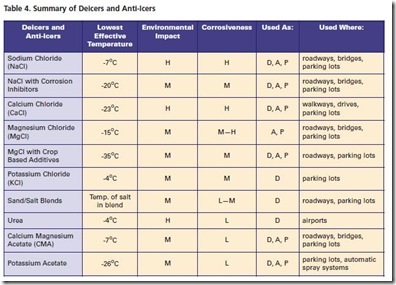I love winter in Canada. It’s my second favourite season of the year (next to the spring/summer/fall season that is). I love hockey, I love the snow, and nothing beats relaxing in a nice warm home with an ice cold beer on a cold winter day. Winter helps me appreciate warm weather. If I didn’t have winter, my summer wouldn’t be nearly as exciting and my long-john undergarments would go unused.
But one thing that really boils my blood is the amount of salt that gets dumped on sidewalks and roads. To me, salt (Sodium chloride) is unnecessary 80% of the time it is applied, and even when it is useful, people dump so much of it that it becomes more of an obstacle than it is helpful. In addition:
- It’s horrible for the environment – It contaminates our soil and pollutes our rivers and lakes.
- It’s very hard on pets – it’s not uncommon for my dog Mojo to start limping when she gets salt in her paws.
- It ruins your shoes
- It causes automobiles to prematurely rust
In a staff report from the City of Toronto in September 2007, the city reported it typically uses an 80:20 ratio of salt to sand in its sidewalk application. The City of Toronto dumps approximately 7,000 tonnes of salt on its sidewalks during an average winter.
On my typical winter commute (walk) to work, it’s not uncommon for me to encounter several 3-inch-thick piles of salt covering a couple square metres.
On February 8, 2005, RiverSides Stewardship Alliance, a non-profit organization dedicated to reduce pollution and improve river water quality released a report that highlights the impact that road salts are having on the environment. They called on the Government of Ontario to immediately dissolve Regulation 339, a regulatory exemption that protects the Ministry of Transportation from being subject to Ontario’s Environmental Protection Act.
Reports and studies on de-icing salt generally refer to cost as being the largest single impediment to shifting to a more environmentally-friendly option, but RiverSides points out that:
“Such accounting ignores the more than six billion dollar annual damage cost to built infrastructure in North America resulting from ongoing use of this corrosive substance and the negative impacts on the ecosystem”
There are a variety of more environmentally-friendly alternatives to using toxic, corrosive sodium chloride but this GreenLiving article suggests that of course the greenest option is to shovel quickly and use an icebreaker when necessary. The full RiverSides report provides this useful table to help the Government make better choices in the future:
In my experience, shoveling snow is sufficient enough to keep sidewalks safe 80% of the time. For the remaining 20% of the time, if it’s absolutely necessary to use salt, I only ask that you use a lot less of it. As for the Government, writing your local representative is the best way to apply pressure to use less harmful materials for de-icing roadways.



Can’t agree more, road departments have been using brine on roads with pretty good success, now if the general public can be educated to use pre-wetted salt and 23% brine, salt use would be decreased substantially.
It seems to be so much easier just to keep dumping the salt on and not think about the consequences .
I use 23% brine at home and it works quite well.